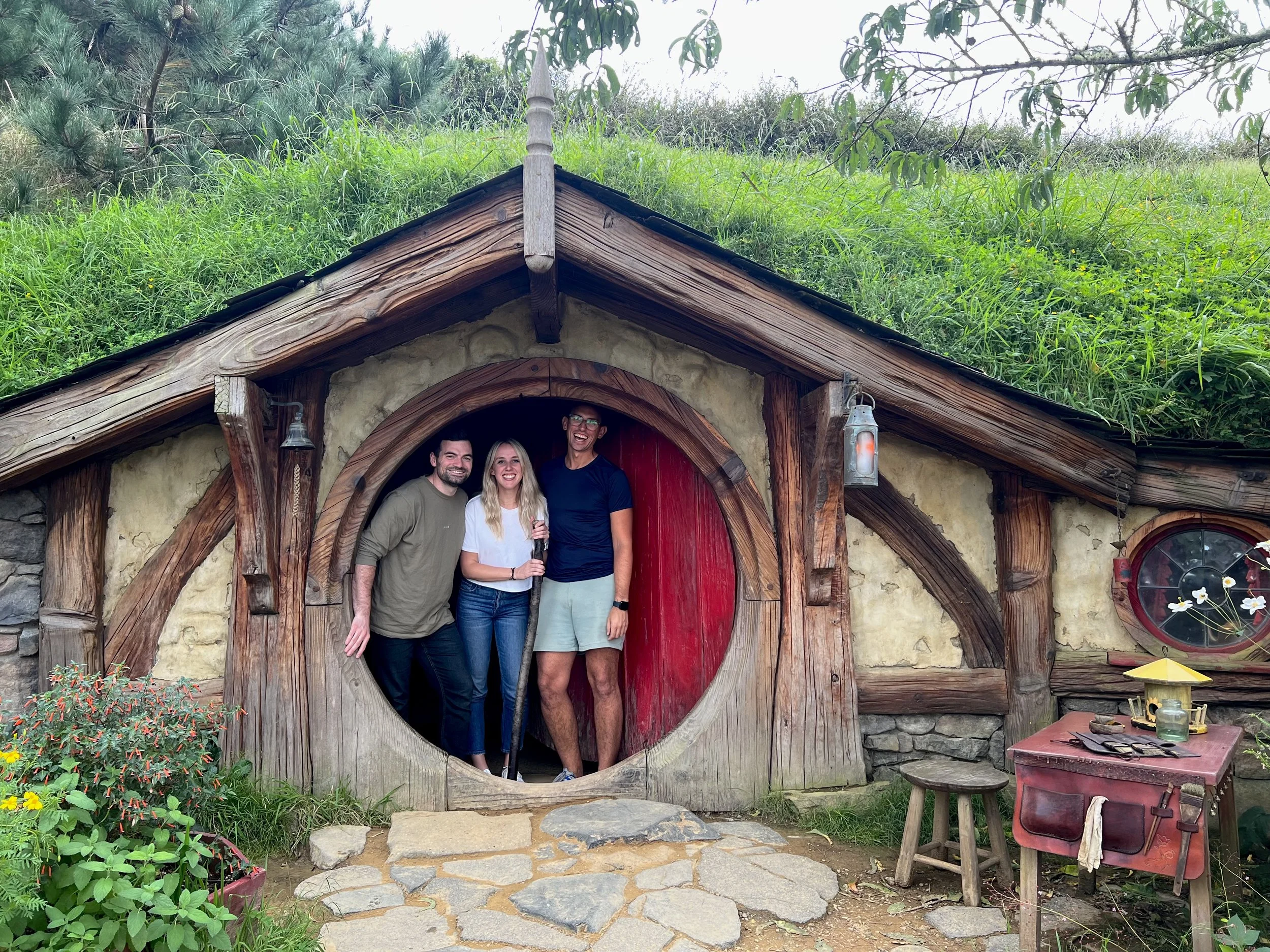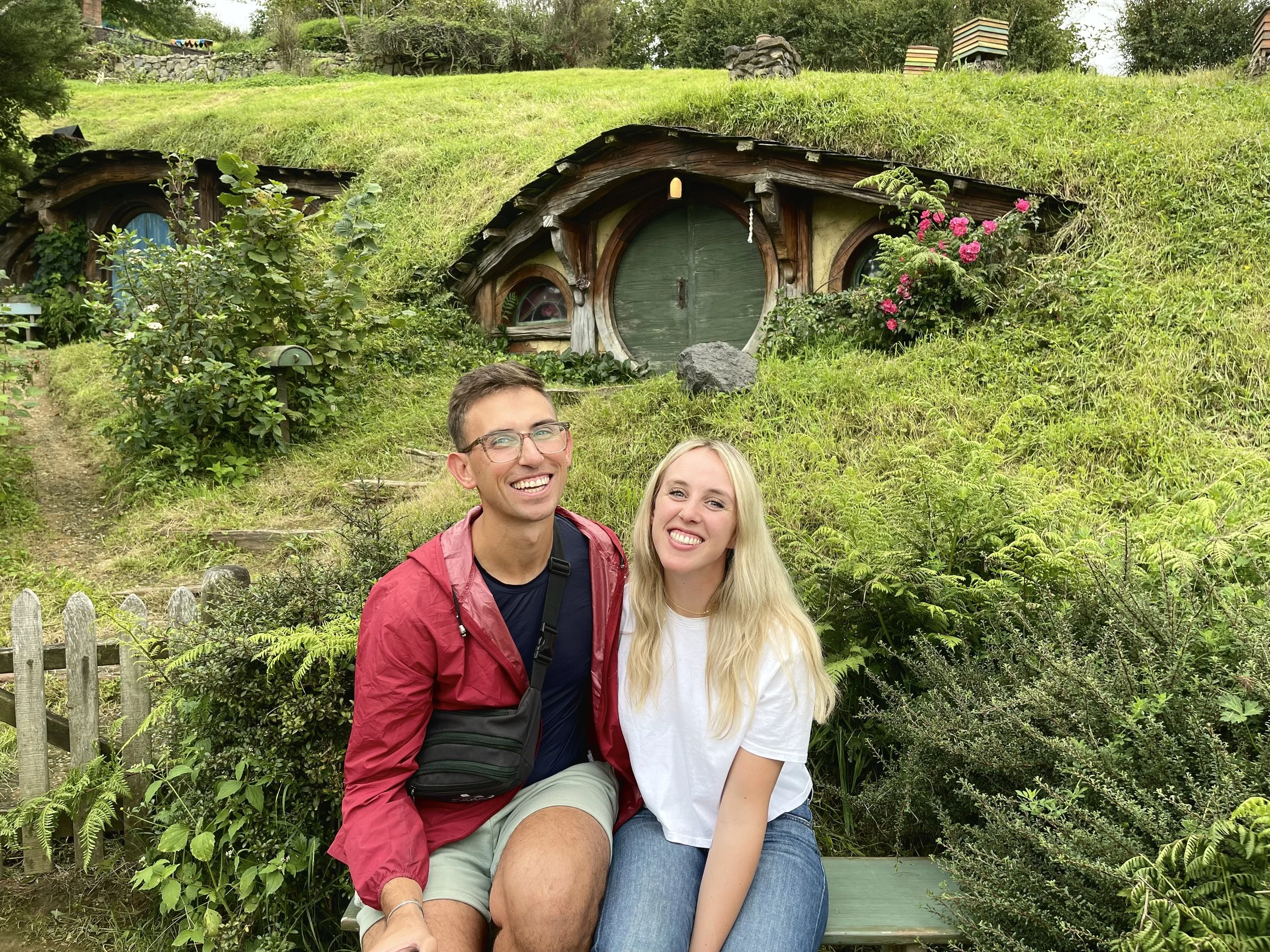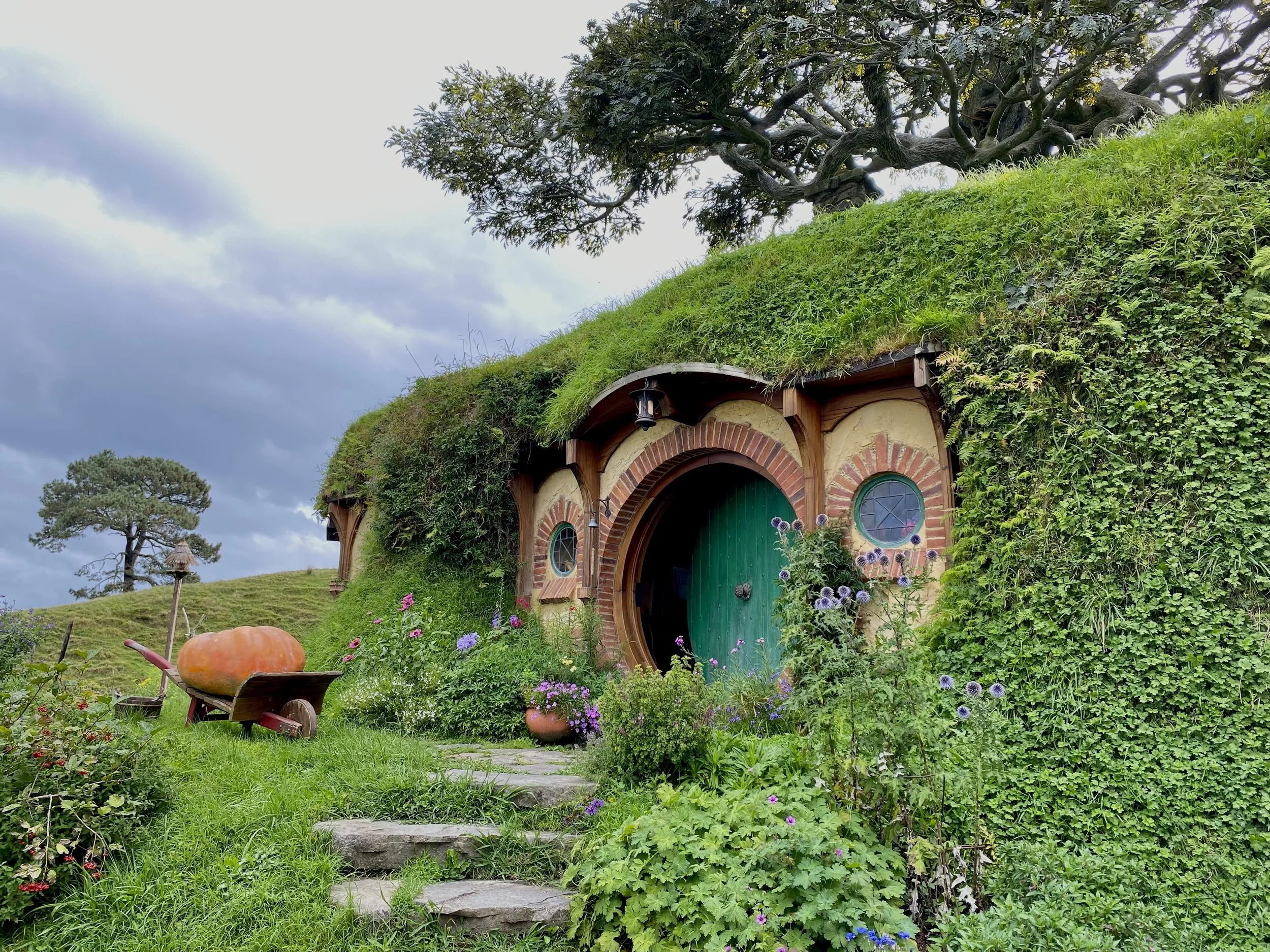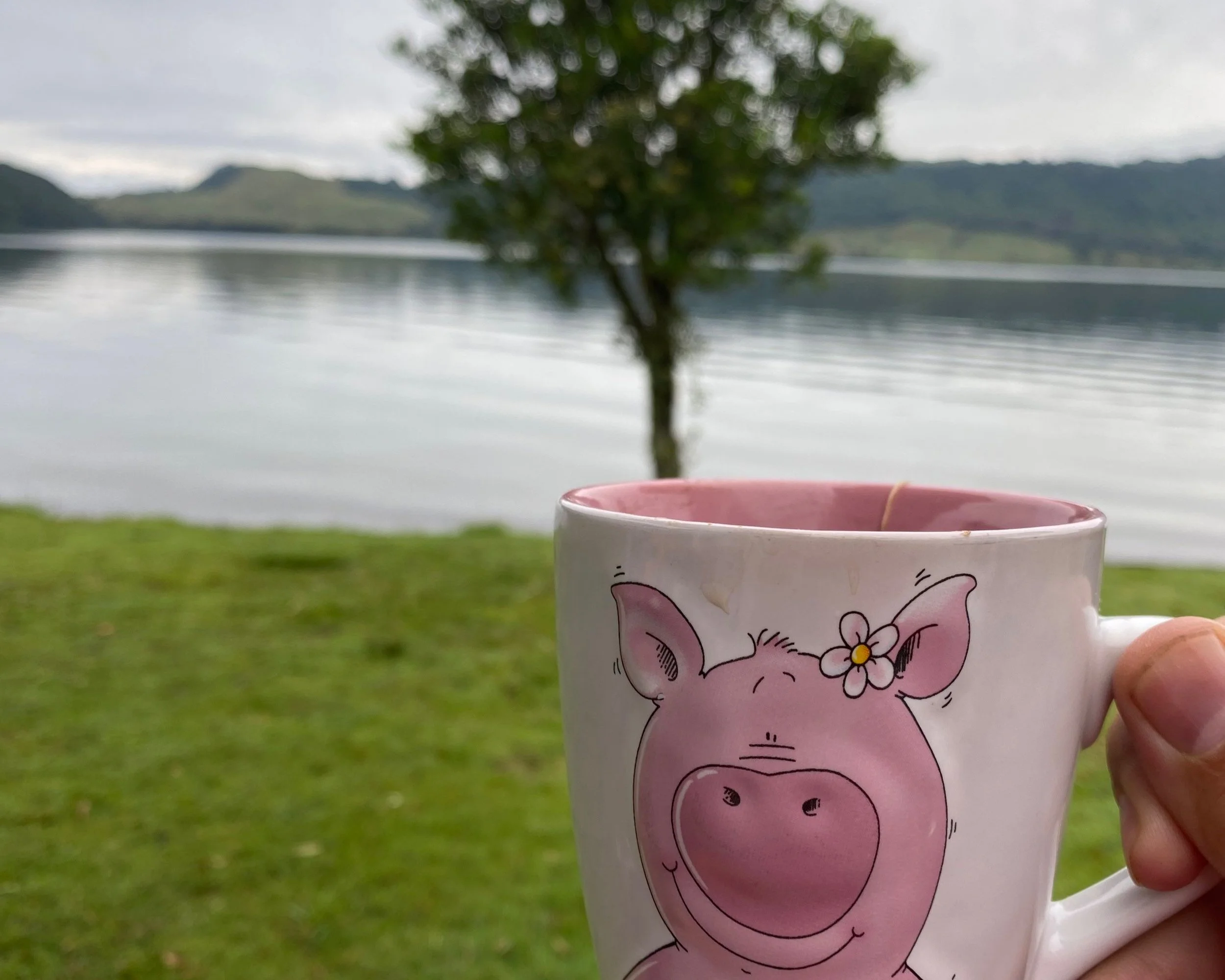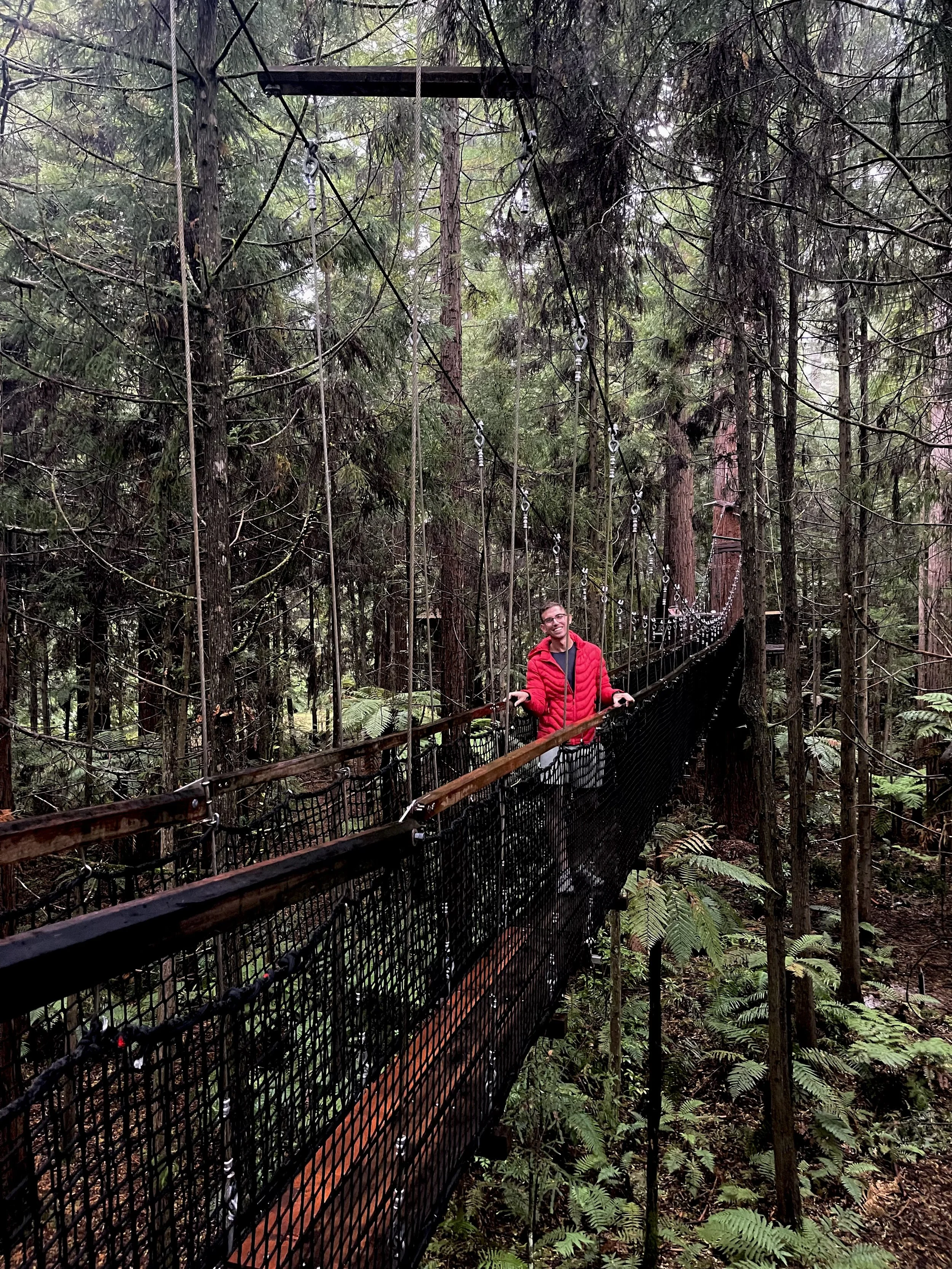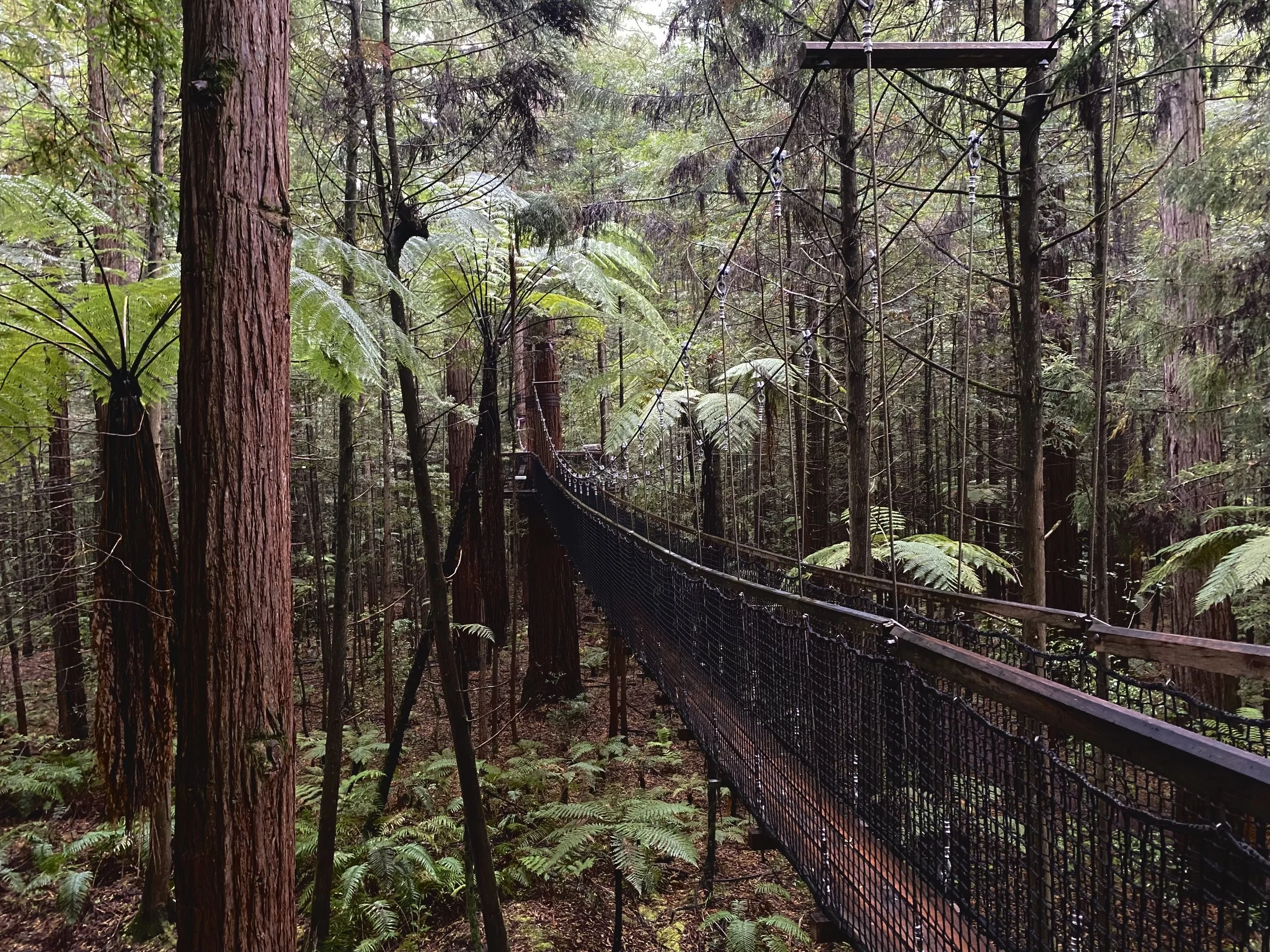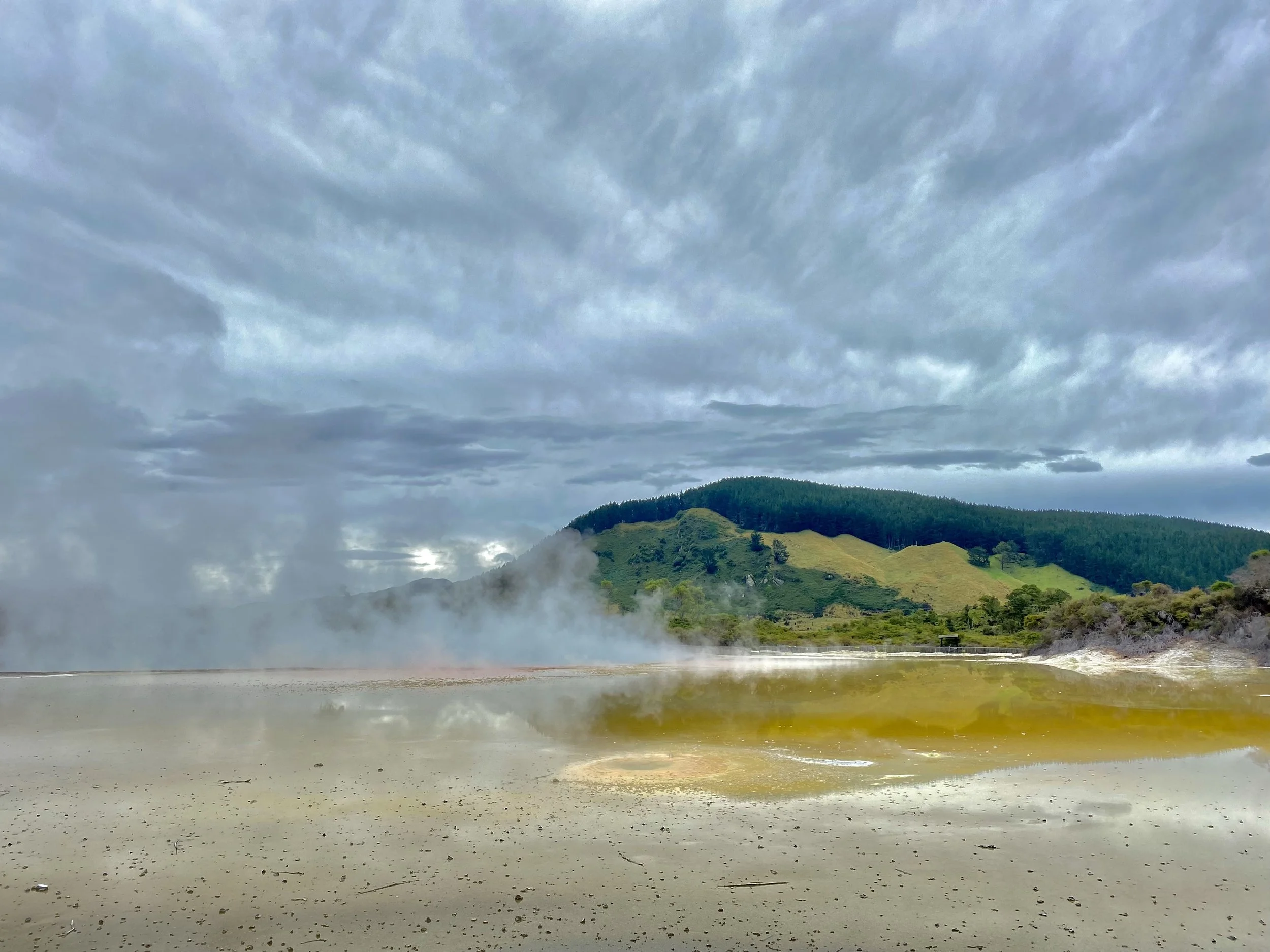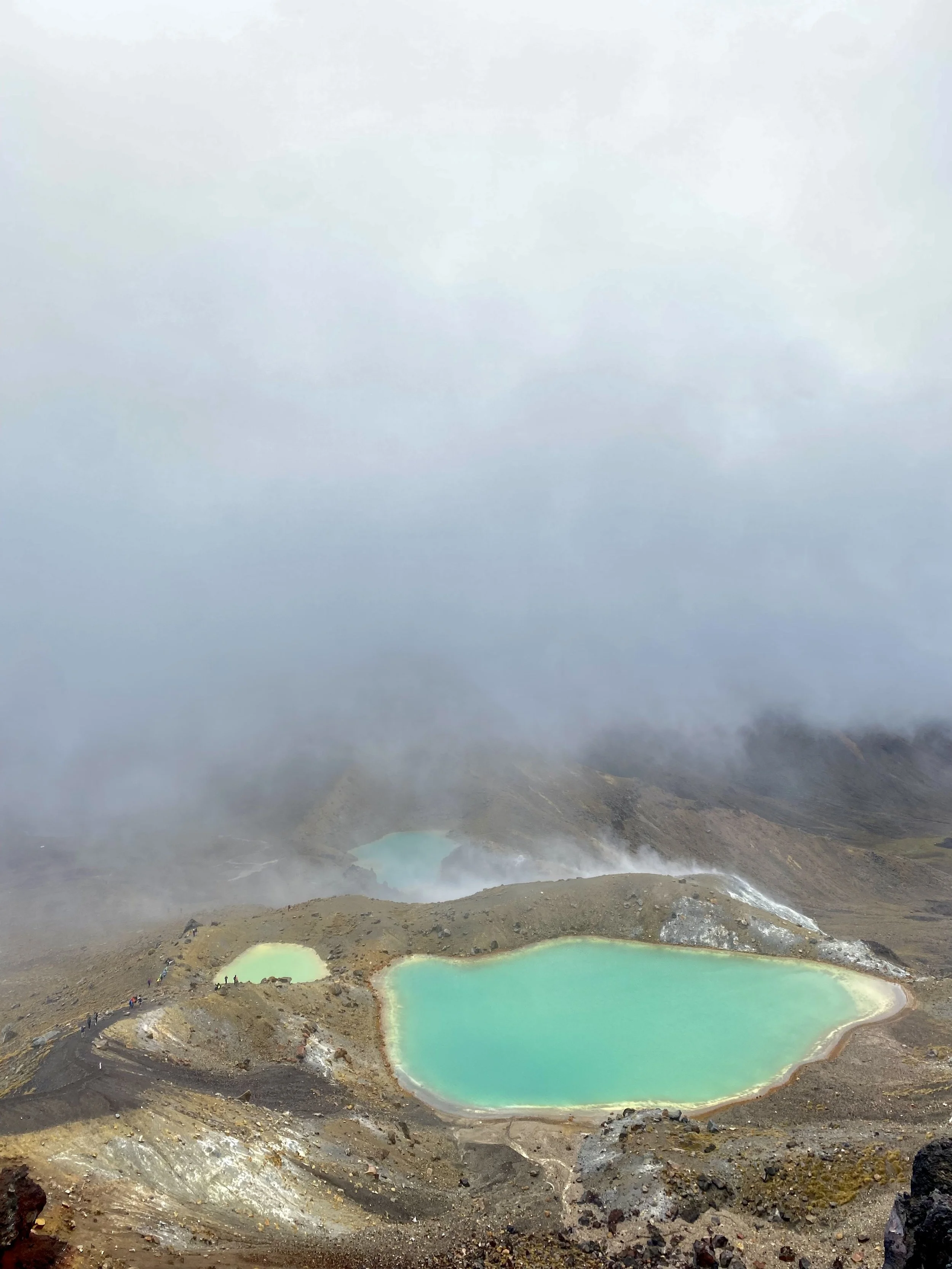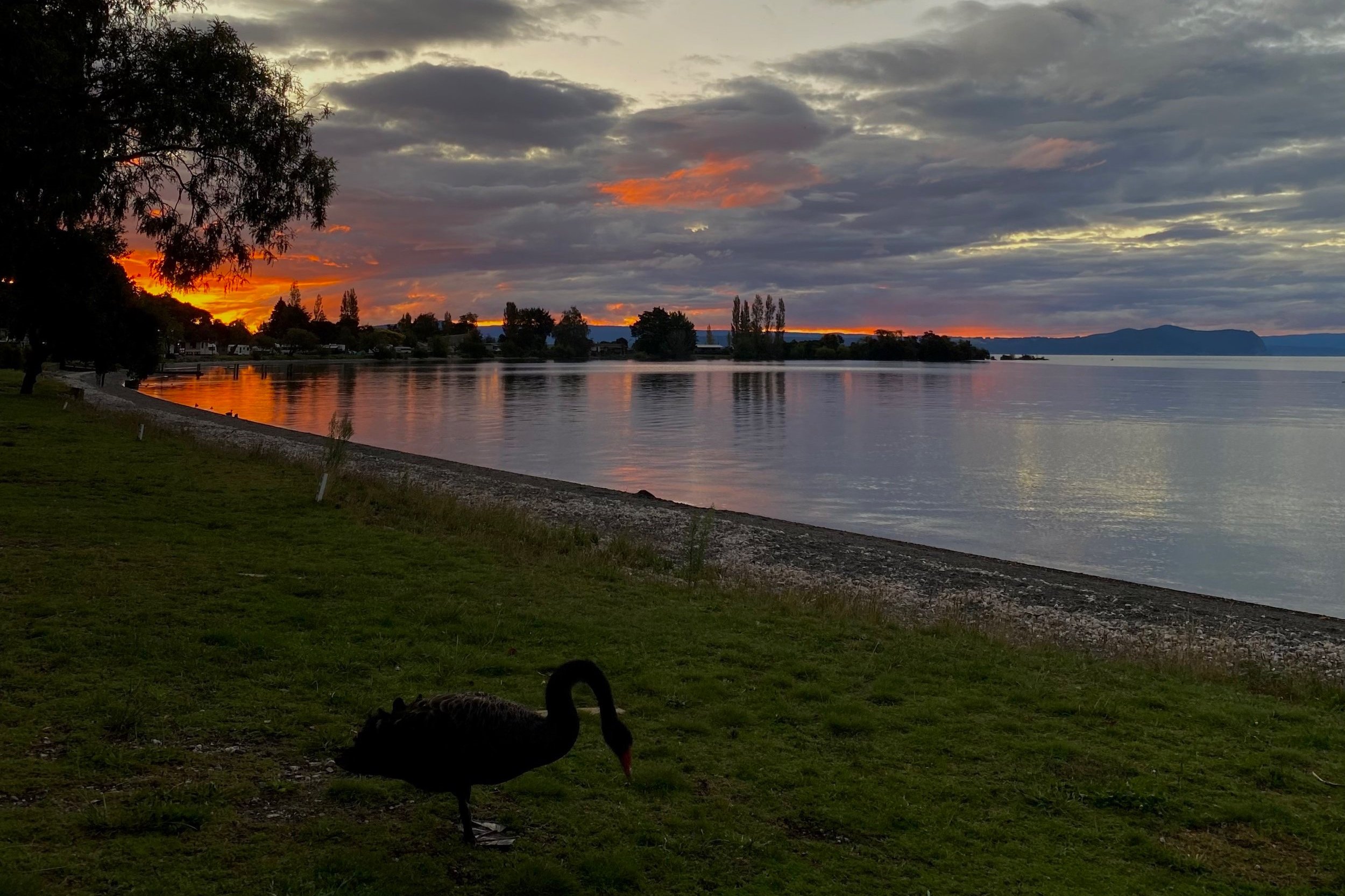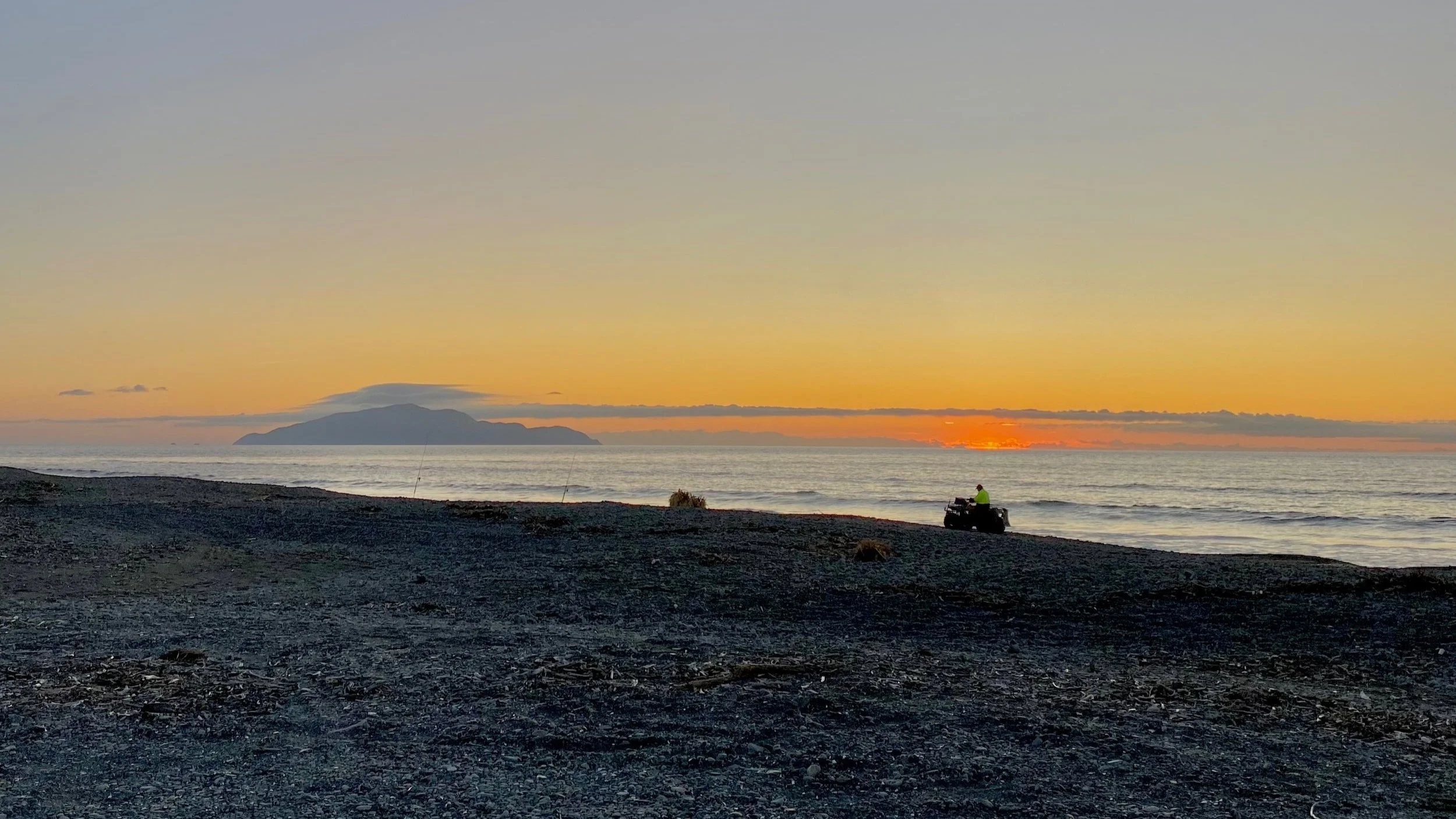A Week in New Zealand’s North Island
New Zealand’s Lesser Island is Still a Delight
New Zealand’s North Island has most of the country’s population (about 80%), including the largest city (Auckland) and capital (Wellington). For tourists coming to explore New Zealand’s natural beauty, it is by far the less famous of the two - with the South Island having almost all of the most famous landmarks and vineyards. The North Island has some really lovely spots in its own right though - and is a worthwhile road trip. From the shire to glow worms to one of the most famous day hikes in the world, you’re sure to find something to delight in every day. If you’re looking for a starting place to plan your road trip, this blog has our one-week itinerary for the North Island, ending with a 3AM ferry from Wellington to Picton.
We had planned to spend 5 days on the road in the North Island but, because we booked our ferry too late, we found ourselves with an extra day. Because of that, this one-week itinerary is pretty slow going - and for the more ambitious traveler it could be easily compacted into five. For us, it proved to be a blessing because it gave us time to adjust to van life and relax.
Our road trip was planned from Auckland to Christchurch, starting in the North Island. Knowing now that the ferries occasionally break, I would recommend instead going from Christchurch to Auckland so that the ferry issues can’t stop you from exploring the South Island. If you’re going the opposite direction, you can just reverse the order of this itinerary. For general advice on planning your campervan trip, this is our blog post for lessons learned on the road.
Day One: Hang Out in Auckland
Auckland is New Zealand’s largest city (at around 1.5 million people) and is where you will almost certainly fly into and out of. The city is clean, well laid out and has good public transit. To me, though, it is a bit sterile - a bit too suburban culturally. I spent two full days in Auckland and that was too many. One would have been plenty.
To explore the center of Auckland, you’ll want to walk along Queen Street (including Aotea Square) and the Harbour District. My favorite place was Cahn’s Wines and Spirits - a charming wine boutique that offered us great advice for where to go on our trip - and recommended a few great New Zealand whites to start our trip. Nearby, we thought Chancery Square was also lovely.
If you’re looking for skyline and cityscape views, you can hike Mount Eden or go up Sky Tower (New Zealand’s tallest building and the second tallest building in the southern hemisphere).
While there are some nature spots to explore (including Auckland Domain, Rangitoto Island, and Waiheke Island), they won’t be on the same level as what you experience the road. My advice is that, once you get your taste for the downtown of Auckland, go ahead and start your road trip.
Day Two: Get that Lord of the Rings Energy at Hobbiton
I had no idea what to expect from New Zealand heading in - but I vaguely expected it to look like the Lord of the Rings movies. So, heading to Hobbiton, the filming location for the Shire, felt like an appropriate start for our trip. I was worried the movie set would be kitschy or disappointing - but it wasn’t at all. Utterly charming and picturesque, Hobbiton left us pointing to hills through the rest of the country saying “that would make a great hobbit hole.”
Only two hours from Auckland and a two hour tour, Hobbiton is also an easy entry for a roadtrip. It allows you to stop at a grocery store en route and get used to driving without a rush. I recommend buying your tickets online a day or two in advance.
After Hobbiton, we headed to Otorohongo to find a freedom camping spot for our next day’s trip. It was an easy, delightful first day on the road.
Day Three: Marvel at the Glowworms in Waitomo
For our second day, we had a slow morning at our freedom camping spot. We were getting used to putting together and taking down our beds - as well as working in the kitchen. We had found a nice pullout overlooking roaming hills and cows to freedom camp, so the long morning was still idyllic.
The only scheduled event for our second day was to see the glowworms in Waitomo - a cave tour where you see bioluminescent insects dangling from the ceilings. It looks like a starry night sky - a remarkable experience. While there are other caves in New Zealand that offer a similar experience, Waitomo is the most famous. Like with Hobbiton, I recommend buying your tour tickets online a day or two in advance because you will book a specific time slot.
Before our scheduled tour, we stopped at Otorohongo Kiwi House - the only Kiwi sanctuary in New Zealand. We were able to see a couple of kiwis in their dark habitat (as they are nocturnal birds). We were also able to learn about (and see for our first time) New Zealand’s incredible native parrots. The more colorful species, the Kea, are an incredibly smart bird known for tearing at the rubber on cars and placing cones in the middle of the road. Beautiful, naughty fuckers.
After the Kiwi House and cave, we drove toward Roturua for our next day’s activities.
Night Three: Rest At a Gorgeous Lake Campground in Rotorua
When we arrived near Rotorua, we spent our first night at a DOC site - along Lake Okareka. We were able to back right up to the lake and both have dinner and breakfast with a stunning waterfront view. Neither of us like cold water, so we didn’t swim; many of the other campers did, though.
This site is when we fell in love with DOC sites; beautiful and perfectly positioned for our Rotorua day, it was essentially perfect. I suspect you will fall in love too if you stay here.
Day Four: Explore the Rotorua Area
Rotorua was our first busy day of the road trip. There were two nature sites we wanted to see - The Redwoods Suspension Walk at Whakarewararewa and Wai-o-tapu Thermal Valley - as well as Rotorua city, which is known for its aboriginal population.
The Redwoods forest are Californian redwoods planted in New Zealand because of the similar climate. In New Zealand they grow faster and thinner; while nowhere near as tall as the California Redwoods, they’re still nice to see. The suspension walk is charming (though expensive) and the nearby nature walk is tranquil. If I wasn’t with my niece who absolutely loves redwoods, I may have skipped this particular stop.
Wai-o-tapu Thermal Valley is an active geothermal area with some stunning natural coloring. There is a nearby geyser to see (Pohutu Geyser) but we weren’t there at the right time to see it. It’s a beautiful area to walk for a few hours drinking a flat white from the visitor center cafe.
After our two nature stops, we spent an hour wandering around Rotorua because we had heard it offered experiences of aboriginal culture. We found the town itself quite sad - the kind of lower income city that had six dollar stores within walking distance of each other and many of the storefronts were closed. Because we didn’t bump into any cultural experiences, we left early. We heard from some other tourists that they loved Rotorua, though, and I suspect they may have gone to the local museum and Te Pa Tu - The Gathering Place. If you don’t plan to do either, I think it’s OK to skip Rotorua City.
At the end of the day, we drove Tongorio for our hike the next day.
Day Five: Hike the Tongorio Alpine Crossing
Sometimes called the world’s best day hike, The Tongorio Alpine Crossing is probably the most famous hike in New Zealand. Known as the setting for Mordor in the Lord of the Rings, it’s a 12 mile point to point hike with a 2,500 foot elevation gain (and about 3,500 foot decline). Because it’s point to point, you need to book a shuttle to bring you to the start so that you can end at your car (or at a shuttle to bring you back to your car). We went with the Ketetahi shuttle because it offered a parking lot instead of street parking, and because it only required one shuttle instead of two.
The weather is a bit unpredictable, so you need to pack for four seasons even in the summer. For us, the weather was miserable (bitterly cold rain and fog so dense we could see nothing at the peak). Even with our weather and the missed opportunity to see the most famous views, the hike was worth it. The 12 miles seem to careen between entirely different types of nature - from volcano to alpine lake to lush forest - and offers beautiful, varied views throughout the hike (whenever you have visibility).
Because the infrastructure is so well maintained, almost all the hike (probably 11 miles of it) felt like a strenuous nature walk. Only the peak section feels like a true hike. I think part of the reason it is so famous is because it’s an accessible day hike for its distance and elevation gain; we even saw trips of young school children doing it.
Night Five: Relax Along Lake Taupo
As you drive to Tongorio and on the tail end of the hike, you’ll be floored by views of Lake Taupo - both New Zealand’s largest lake and largest volcano. We knew we wanted to soak in the view some, so we booked a night at the Top 10 Holiday Park Lake Taupo - the only place you can camp directly along the water.
It was an absolutely stunning place to relax after the long hike - and the sunsets are always remarkable.
Day / Night Six: Give Yourself a Beach Day
After Tongorio, our plan was to take a long morning along Lake Taupo and then drive the five hours to Wellington to spend the following day there. Instead of trying to find a place to camp in Wellington, we decided to freedom camp along the beach in Otaki about an hour away. It allowed us to make most of the drive in the day, take a long walk along the beach, and then eat dinner watching a beautiful sunset.
It also set us up for a short drive for our day to explore Wellington.
Day Seven: Learn About New Zealand in Wellington
Wellington is the capital of New Zealand and, unofficially, its cultural capital. I found it cooler than Auckland but less cool than Christchurch - a good place to spend a day but one I was ready to leave at the end.
To start our day in Wellington, we went to Zealandia - an entirely fenced eco sanctuary meant to restore the area’s biodiversity. The sanctuary is designed to be predator free and has successfully helped to restore many of the native bird populations in the surrounding area (because the birds can safely breed in the sanctuary and are free to leave whenever they want). I thought Zealandia was impressive both conceptually and in practice, and I loved spending my morning walking among the birds.
After Zealandia, we parked our van on Hawker Street en route to the Mount Victoria lookout point. (To be fair, at first we disastrously tried to park in the urban core of the city - and quickly learned our lesson to not try that again in one of the major cities). From there, we walked to downtown Wellington.
The Museum of New Zealand Te Papa has a nature section summarizing the formation, geology and native biodiversity of New Zealand that is the best museum I have ever been to; plus, it’s free. I think it is a can’t miss, especially if you’re visiting to explore the nature of New Zealand. (The other exhibits are OK to skip, in my opinion).
After the museum, we walked along Cuba Street, the main commercial district, and Leeds Street, a nearby bohemian quarter. To end the day, we went to the Mount Victoria Lookout Point for sunset (and napped there until our ferry).
At the end of your time in Wellington, you can hop on your ferry. Ours was scheduled for 3AM (because it was all that was available when we tried to book a month in advance).


